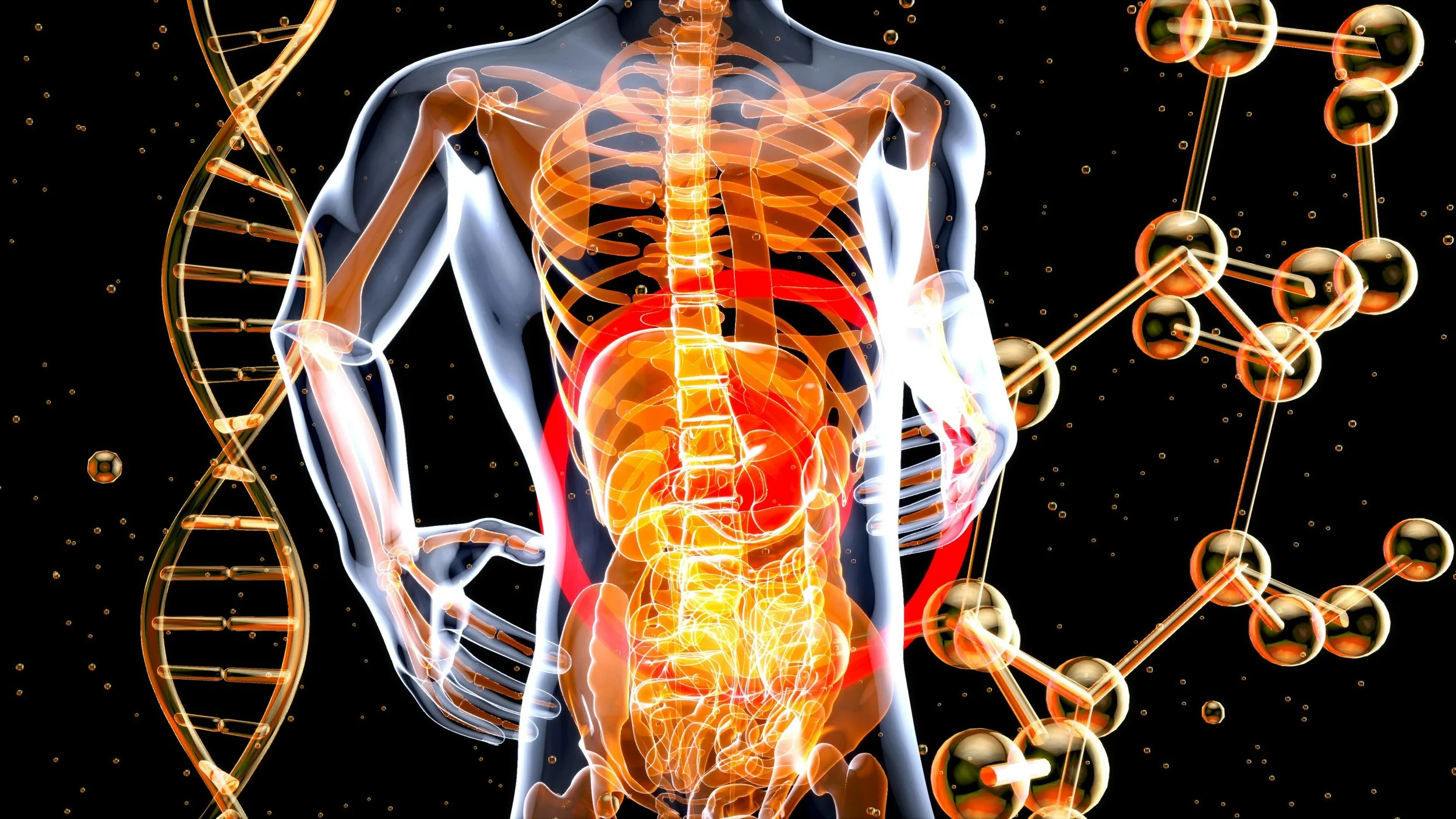Pain "Switch" Found in the Brain: New Hope for Chronic Pain Sufferers
Finally pain-free: New therapeutic approaches for chronic pain offer hope to sufferers. Photo: Freepik
Hundreds of millions of people worldwide live with chronic pain. In Europe, North America, and Asia, roughly one in five people are affected, with estimates ranging from 15 to 25 percent of the population. That means over a billion people globally are dealing with this burden.
Chronic pain can severely limit quality of life, and it's often incredibly difficult to treat. But now, several research breakthroughs are offering hope for new therapies.
Brain's "Pain Switch" Identified
Researchers at the University of Pennsylvania have discovered a brain region in mice (the parabrachial nucleus) that remains active during chronic pain. Normally, this area switches off after an injury heals. But in chronic pain conditions, it continues sending pain impulses long after the original injury has healed.
In their animal studies, the researchers successfully reduced pain using various stimuli. This triggered the release of a molecule called Neuropeptide Y in the brain, which calmed the pain signals. "Pain is in your head, but it's very real," says co-author Nicholas Betley in the journal Nature, which published the study. He hopes these findings will lead to new medications that specifically target this "pain switch". It’s a potential breakthrough in a field with limited treatment options, especially since effective medications like opioids aren't safe for long-term use.
In the mice, hunger, thirst, or fear led to pain reduction. These more urgent needs shifted focus away from the pain, Betley explains. "Something more important than pain came along." This activated neurons in the brain that released the "pain switch" molecule Neuropeptide Y. Betley suggests that calming strategies might have the same effect, mentioning meditation or acupuncture as examples, though further research is needed.
Retraining Your Brain with Pain Reprocessing Therapy (PRT)
Pain Reprocessing Therapy (PRT) takes a similar approach, aiming to break the cycle of chronic pain without medication, using brain training alone. Often, it's the brain that continues generating pain even without physical damage. It mistakenly interprets safe bodily signals as dangerous.
In PRT, patients learn to reinterpret these signals correctly. Pain is no longer viewed as a threat, but as a harmless signal. Treatment involves education, counseling, mindfulness exercises, and targeted brain training.
In a controlled study with people who'd suffered from back pain for years, 98 percent of participants improved. After just four weeks, 66 percent were completely or nearly pain-free. Today, therapists worldwide offer PRT.
Magnetic Pulses Help the Brain Reprocess Pain
A newer study explored whether the brain can be retrained using external impulses. They used transcranial magnetic stimulation (TMS), which has already proven successful for patients with depression or obsessive-compulsive disorder. The therapy targets specific brain regions with gentle magnetic pulses. And according to the latest research, it works for chronic pain too. With the right settings, these pulses can help the brain process pain differently and calm overactive neural networks.
The treatment is painless and has minimal side effects. In trials, many participants reported noticeable relief after just a few sessions, particularly for conditions like fibromyalgia, nerve pain, and back pain. The therapy isn't yet approved, and more studies are underway to find optimal settings for different pain patterns. But researchers are optimistic that TMS could help many sufferers.
Exercise Provides Measurable Relief
A new analysis shows that exercise provides measurable benefits for chronic pain. The study combined data from eleven research trials and revealed clear results: exercise leads to less pain, better mood, and improved quality of life.
Programs lasting 10 to 15 weeks proved most effective. Activities should be regular, several times per week for 40 to 60 minutes, according to the research. Crucially, exercise should be individually tailored. For one person, cardio might be ideal; for another, yoga or dance might work better.
Researchers found that exercise not only trains the body but also the nervous system, and has anti-inflammatory effects. Regular physical activity releases endorphins, which regulate pain perception in the brain, reduce stress, and improve mood.
The analysis also found that people who move regularly in daily life have a lower risk of developing chronic pain. Movement doesn't just mean exercise, it includes walking or even household chores.
The Gut-Pain Connection
Our gut also plays a role in pain perception. A study recently published in Cell Host & Microbe shows that disrupted gut flora can amplify certain pain signals. Conversely, calming the gut can provide relief, at least according to initial animal studies.
In experiments with mice, the bacterium Akkermansia muciniphila played a key role. Pain sensitivity increased when this bacterium was absent. By administering healthy gut bacteria, researchers significantly reduced pain in mice.
Whether such therapy works in humans requires further research. The current study also focused on a specific condition (sickle cell disease) rather than chronic pain generally. However, the connection and potential impact are theoretically sound. There's hope that pain relief might eventually be achieved through diet or specific probiotics.
What Can Sufferers Do Now?
Chronic pain should always be examined and treated by specialists. The causes and exact nature of the pain must be professionally assessed. Different forms require different therapeutic approaches.
At the same time, clinics and pain centers offer various everyday tips that can be helpful for many people with chronic pain:
Pacing: One of the most important measures is avoiding overexertion. Pacing involves breaking tasks into smaller segments lasting less than 15 minutes, with planned breaks before pain kicks in.
Movement: Walk for 30 minutes daily or do other light activities. This calms the nervous system.
Posture: Change position every 20 to 30 minutes to reduce strain. Ideally, combine posture changes with a five-minute "walking break."
Breathing exercises: Deep breathing for 5 minutes daily lowers stress levels and reduces pain signals.
Mindfulness: Pause briefly, breathe consciously, observe your thoughts. This helps you perceive pain differently.
Heat: A warm shower or heating pad relaxes muscles and nerves during cramps or stiffness.
Cold: An ice pack helps with swelling and inflammation.
Distraction: Listen to your favorite music. Read an uplifting article. Call a friend. This lifts your mood and lowers pain intensity.
Sleep: A regular sleep schedule helps your body regenerate.
Nutrition: Fiber, vegetables, fermented foods, less sugar. This supports gut health and can reduce inflammation.
Sources
Nature News: Brain area linked to chronic pain discovered — offering hope for treatments
Stanford Pain News: Can TMS help chronic pain?
JAMA Psychiatry: Effect of Pain Reprocessing Therapy vs Usual Care for Chronic Back Pain
Pain Reprocessing Therapy: What is Pain Reprocessing Therapy?
Journal of Pain Research: Effects of exercise on chronic pain: a systematic review
Cell Host & Microbe: Gut microbiota and metabolites drive chronic sickle cell disease pain in mice
Mayo Clinic Press: Chronic pain: Take steps to regain your life
Harvard Health: Managing chronic back pain
Stanford Medicine: Chronic Pain Self Management Program: Pacing Action Plan
Get your weekly dose of good news every Wednesday morning. We'll send you all the new Happy Spot articles with quick summaries, along with the week's top headlines featuring good news worth reading.
TRENDING ARTICLES










